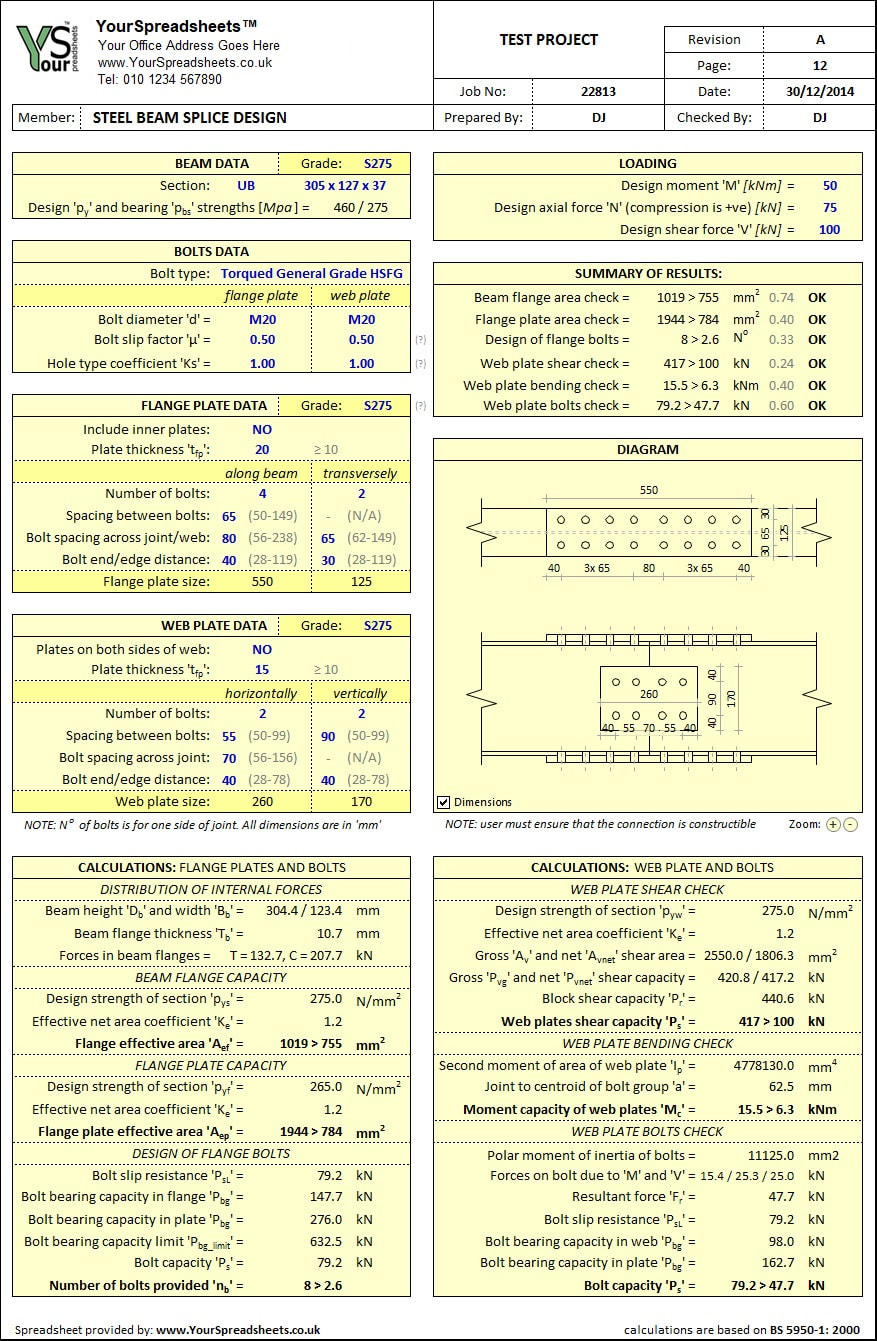

Steel structure splicing on-siteġ) For splicing on-site, generally, the flange and web should be disconnected at the same section to facilitate segmented transportation (Figure a). When θ satisfies tgθ≤1.5, check and calculation is not necessary. When the weld strength is insufficient, oblique welds can be used. Steel structure splicing at factoryġ) It is best to stagger the flange and web positions to avoid the concentration of welds.Ģ) The splicing welds of flanges and webs generally adopt butt welds.ģ) Check and calculations are not required for welds that meet the weld quality inspection levels of Class I and II.Ĥ) Check and calculations are required for welds that meet the Class III weld quality inspection level. The splicing of beams is divided into splicing at the factory and on-site splicing due to different construction conditions. The splicing of the tension and compression components should be calculated according to the principle of equal strength that is, the splicing materials and connectors can transmit the broken section’s maximum internal force.

When the upper and lower contact surfaces are planed flat and topped, they should be supplemented with a small number of welds and bolts when they are directly pressure-bearing and force-transmitting so that they cannot be moved. The lower part (or the upper and lower two parts) has positioning parts (channel steel or angle steel) to ensure the correct position when welding. When welding, the upper part of the component should be beveled in the factory in advance. Pressure-bearing components: Welding (pictures e, f) or the upper and lower contact surfaces can be flattened and directly pressure-bearing transmission force (pictures g, h). Tension-bearing components: splicing plates can add high-strength bolts (Figure c) or endplates to add high-strength bolts (Figure d). When determining the web splicing plate’s width, it is necessary to leave enough space for operating the welding rod when welding the longitudinal weld. When splicing plates and fillet welds are used, the components’ flanges and webs should have their own splicing plates and welds to make the force transmission as direct and uniform as possible to avoid excessive stress concentration.
#SPLICE PLATE GALVINIZED STEEL PLUS#
Pressure-bearing components: direct butt welding (figure a) or splicing plate plus fillet welding (figure b) can be used. When direct butt welding, the weld quality must meet the Class I or II quality standards otherwise, splicing plates and fillet welds must be used. Tension-bearing components: direct butt welding (figure a) or splicing plate plus fillet welding (figure b) can be used. Steel structure splicing for uniform cross-section Steel structure splicing at factory

Steel structure splicing for uniform cross-section It is susceptible to corrosion, and the surface needs to be coated with anti-corrosion coatings to reduce or avoid corrosion and increase durability Heat-resistant and non-fire-resistant, fire-resistant coatings are requiredĢ. High strength, lightweight, high safety and wealth of components, and lower building costġ. Good seismic performance, easy to transform, flexible and convenient in use, bringing comfort and so onĥ. Building materials can be reused, stimulating the development of other new building materials industriesĤ. Increase the use area of buildings, reduce construction waste and environmental pollutionģ. Construction is not affected by the seasonĢ. Therefore, it is widely used in industrial buildings and civil buildings all over the world.ġ. Due to the reusability of steel, it can greatly reduce construction waste and become more environmentally friendly. And because the components can be manufactured in factories and installed on-site, the construction period is greatly reduced. Generally, beams, columns, trusses, and other components made of section steel and steel plates constitute a load-bearing structure, which together with roof, wall, and floor, form a building.Ĭompared with traditional concrete buildings, metal structure buildings use steel plates or section steel instead of reinforced concrete, higher strength, and better seismic resistance. The metal buildings uses steel to form a load-bearing structure.


 0 kommentar(er)
0 kommentar(er)
